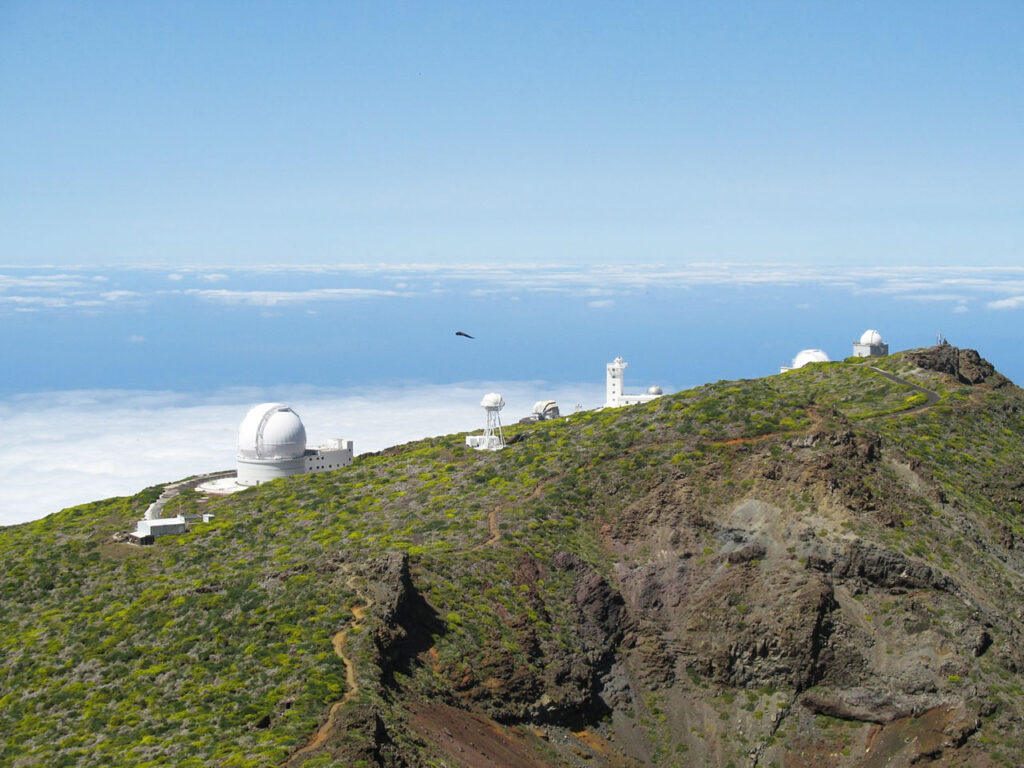by Ludwig Scheibe (TU Berlin), April 2025
The Observatorios de Canarias are two high-performing astronomical observatories on the Canary Islands Tenerife and La Palma in the Atlantic Ocean. The area with the high mountains, comparatively dry air and low average cloud cover offers excellent conditions for astronomical observations.
The Observatorios de Canarias are operated by the Instituto de Astrofísica de Canarias IAC on Tenerife and host telescopes and instruments from around 60 institutes from over 20 countries.
Observatories
Teide: The Observatorio del Teide is situated on mount Teide on the island Tenerife, at an altitude of ca. 2400 meters. Established in 1964, it hosts a number of international telescopes, particularly those dedicated to the study of the Sun, for example the GREGOR Solar Telescope.
Roque de los Muchachos: The Observatorio del Roque de los Muchachos ORM is located near the middle of the island La Palma, also at about 2400 meters above sea level. It is among the largest observatories in the Northern hemisphere and, among other things, features the The Gran Telescopio CANARIAS, which, with a mirror diameter of 10.4 meters, is the current largest optical-infrared telescope in the world. It also hosts HARPS-N, a high-resolution spectrograph to measure radial velocities. similar to the HARPS-instrument at ESO‘s La Silla Observatory.

Roque de los Muchachos Observatory on the Canary Island of La Palma, Credit: ESO/R. Hook under CC BY 4.0.
Exoplanets
The Observatorios de Canarias have been involved in some spectacular exoplanet research. One example is the discovery of Barnard’s Star b, a sub-Earth-mass planet around one of our closest neighbor stars, for which the HARPS-N instrument contributed to the radial velocity measurements. Read more here about the planetary system around Barnard’s Star.

Artistic depiction of the four exoplanets around Barnard’s Star. Credit: International Gemini Observatory/NOIRLab/NSF/AURA/P. Marenfeld under CC BY 4.0.
Links for further reading:
